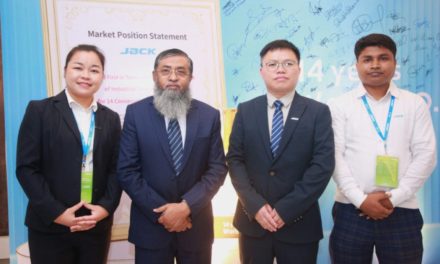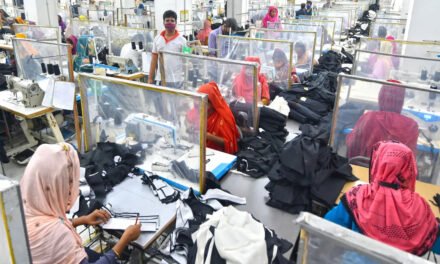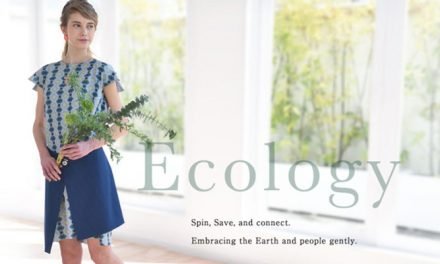 The US is amongst the biggest manufacturers of textile-related products – as stated by the National Council of Textile Organization. The Council for Textile Recycling states that a US citizen, on the whole, does throw away nearly 70 pounds of textiles every year. This is where textile recycling comes to the rescue.
The US is amongst the biggest manufacturers of textile-related products – as stated by the National Council of Textile Organization. The Council for Textile Recycling states that a US citizen, on the whole, does throw away nearly 70 pounds of textiles every year. This is where textile recycling comes to the rescue.
The textile recycling market is worth $ 4.8 bn as of now and is expected to reach $ 6.6 bn by 2033 at a CAGR of 3.2% between 2023 and 2033.
Tyton Biosciences has its water-based hydrothermal solution for recycling garments made from polyester, cotton, and polycotton blends. Cotton thus gets segregated from polyester by having it disassembled into monomer components; thereby letting it gets re-assembled into brand new polyester. Tree pulp could also be replaced with MMCFs (Man Made Cellulosic Fibers).
It has been observed that recycled polyamide, as compared to virgin polyamide/nylon, gives lower emissions of carbon dioxide. Patagonia makes use of recycled polyamide in more than 80% of the apparel created by them.
At the same time, the fact that different materials need specialized handling methods can’t be ignored. This factor could restrain the textile recycling market.
Future Market Insights has walked through these facts with future prospects in its latest market study entitled ‘Textile Recycling Market’. It has its team of analysts and consultants to look through a 360-degree approach in its primary, secondary, and tertiary modes of research.
“The Government of the US has decided upon increasing awareness amongst consumers regarding recycling of textiles. It did launch an initiative for achieving zero waste by the year 2037 under guidance of the Council of Textile Recycling (CTR)”, says an analyst from Future Market Insights.
Key Takeaways from the Textile Recycling Market
· North America holds the largest market share with the US being subject to growing awareness regarding impact of textile waste on the environment. Various public awareness campaigns are being conducted regarding textile recycling.
· Europe holds the second-largest market share with Germany, France, and the UK opting for something like Sustainable Clothing Action Plan. The government of the UK has put forth Textile 2030 initiative.
· The Asia-Pacific is expected to grow at a rapid pace in the textile recycling market with South Korea, Japan, and China leading from the front. This is evident from the fact that Hyosung, in May 2021, did collaborate with various municipal governments for manufacturing nylon fabrics made out of recycled fishing nets. Vegan Tiger has come up with several textiles made out of materials like stickers, gift wrap, and paper.
Competitive Textile Recycling
· Birla Cellulose, in May 2023, entered into collaboration with TextileGenesisTM for providing transparency and traceability solutions in garments vertical. The orchestrators include Fashion for Good, Canopy, and Circular Fashion Partnership for scaling the circular business model.
· Lenzing Group, in 2023, did announce launching LENZINGTM ECOVERO abreast with REFIBRATM technology that would help it in transiting toward circular economy in textile vertical.
· Circ, in April 2023, entered into collaboration with Zara for launching womens wear collection made from recycled polyester and Lyocell separated from the mixed residue in the form of textile waste.
· Indorama Ventures Public Company, in June 2020, completed acquisition of AG Resinas Ltd’ s PET recycling facility.
· TRI Group, in May 2022, completed acquisition of Soex UK for strengthening the presence in Europe.
· Saint-Gobain, in April 2022, announced planning to spend US$ 32 Million toward upgradation of CertainTeed’s Chowchilla glass wool plant based out of California. It estimates that this upgradation would be curtailing emissions of carbon dioxide by 4000t/yr.
· HYOSUNG TNC, in March 2022, did ink an agreement with TOPTEN for working together to develop high-class eco-friendly products.
What does the Report state?
· The research study is based on material (cotton, polyester, wool, polyamide, and likewise), source (apparel waste, home furnishing waste, automotive waste, and likewise), and process (mechanical and chemical).
· The textile recycling market is expected to grow with the objective of doing away with accumulation of textile waste in landfill space.





















